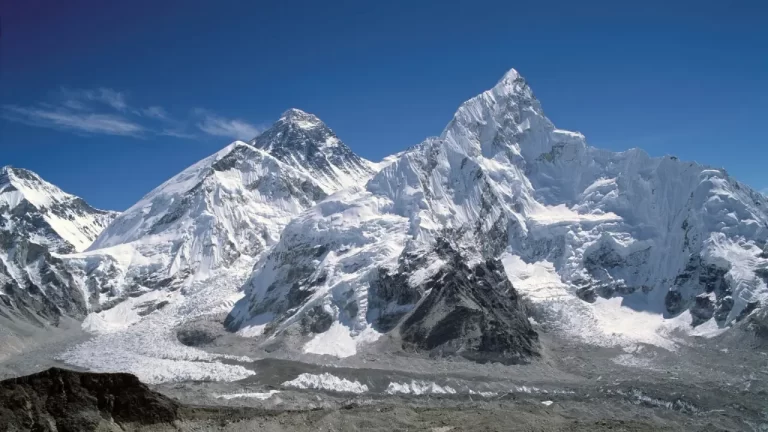Estimated reading time: 9 minutes
Table of contents
Remote sensing is a powerful tool used to gather information about the Earth’s surface without having physical contact with it. This process involves detecting and measuring reflected or emitted energy from the Earth’s surface using advanced sensors. Over the years, the technology has evolved dramatically, shifting from simple balloon-based cameras to high-tech satellite sensors that provide global coverage. In this blog, we’ll break down the types of remote sensing based on different classification systems, highlighting examples and real-world applications.
Classification Based on Platforms
Remote sensing platforms are the carriers of sensors used to collect data. These platforms can be grouped into two main types: airborne (within Earth’s atmosphere) and spaceborne (outside Earth’s atmosphere).
Aerial Platforms (Airborne Remote Sensing)
Airborne remote sensing involves sensors mounted on aircraft, drones, or helicopters that fly at varying altitudes. This type of remote sensing is ideal for capturing high-resolution images over smaller areas. For instance, aerial platforms are commonly used for urban planning, crop monitoring, and disaster response. After natural disasters like floods or earthquakes, drones equipped with sensors can quickly survey the damage, providing crucial data for emergency teams.
Example: The use of drones for precision agriculture. Farmers use drone-mounted sensors to monitor crop health, identify areas of pest infestation, or detect irrigation problems. This method provides real-time data, allowing farmers to make decisions that improve crop yields and reduce resource usage.

Spaceborne Platforms (Satellite Remote Sensing)
Spaceborne remote sensing involves satellites orbiting the Earth. These platforms provide a broad view of large regions and can collect data continuously over time. Satellite remote sensing is used for climate monitoring, environmental conservation, and large-scale mapping projects. Satellites also allow us to monitor remote or politically sensitive areas that might be inaccessible by other means.
Example: Landsat satellites, operated by NASA, have been capturing Earth’s images since 1972. These satellites have provided essential data for land-use changes, urbanization trends, deforestation, and environmental protection efforts globally.
Spaceborne platforms can be further divided into low Earth orbit (LEO) and geostationary orbit (GEO) satellites. LEO satellites, such as the Sentinel series by the European Space Agency, pass close to the Earth and offer high-resolution images. GEO satellites, like weather satellites, remain fixed over a specific area, offering continuous observation.

Classification Based on Energy Sources
Remote sensing systems can be classified into two types depending on the source of energy they use:passive and active.
Passive Remote Sensing
Passive remote sensing relies on natural energy sources, typically the Sun. These sensors detect and measure sunlight that is reflected from the Earth’s surface or thermal energy that is emitted naturally by objects. Passive systems are commonly used in environmental monitoring, such as studying vegetation health, water quality, or urban heat islands.
Example: MODIS (Moderate Resolution Imaging Spectroradiometer) aboard NASA’s Terra and Aqua satellites uses passive sensing to monitor global vegetation health. It helps track forest cover changes, wildfires, and even algal blooms in oceans.
However, passive systems have limitations. They cannot operate effectively during the night or under heavy cloud cover. For example, optical sensors like those used in Google Earth imagery rely on sunlight and cannot capture images when it’s dark or cloudy.

Active Remote Sensing
Active remote sensing systems generate their own energy to illuminate a target. These systems send out signals (such as microwaves or lasers) and measure the energy reflected back. Active sensors can work at any time of day and under any weather condition, making them ideal for applications where passive sensors fall short.
Example: Synthetic Aperture Radar (SAR), an active remote sensing system, is used to monitor terrain, urban infrastructure, and glaciers. SAR can penetrate clouds and even gather information about the Earth’s surface during the night. A notable application is monitoring the movement of ice sheets in Antarctica.
Another active remote sensing technology is LiDAR (Light Detection and Ranging), which uses lasers to map the Earth’s surface with extreme precision. LiDAR is widely used in topographical surveys, forest management, and archaeological exploration.
Classification Based on Imaging Media
The process of capturing the reflected or emitted energy is another way to classify remote sensing. There are two primary imaging media: photographic and digital.
Photographic Remote Sensing
Photographic remote sensing uses cameras with film sensitive to light, capturing images of the Earth’s surface. This traditional technique has been widely used for aerial photography, particularly for mapping and surveying land use. While photographic systems provide high-quality images, they have limitations, such as requiring physical film recovery and processing.
Example: During World War II, aerial photography remote sensing was extensively used for surveillance. Today, it’s still used in some specific applications like legal boundary mapping or historical land use analysis.
Digital Remote Sensing
In modern remote sensing, digital imaging has become the standard. Digital sensors convert light into electrical signals, making it easier to transmit, process, and analyze the data. Digital imaging allows for higher resolution and greater accuracy compared to traditional photographic methods. This approach is used by most satellites, including weather monitoring systems and land-use mapping.
Example: Sentinel-2, a satellite part of the European Space Agency’s Copernicus Program, uses digital remote sensing to capture high-resolution multispectral images of the Earth’s surface. It helps monitor changes in agriculture, forestry, and water bodies.
Digital systems also enable real-time data transmission from satellites to ground stations, allowing for immediate analysis and application.
Classification Based on the Electromagnetic Spectrum
Remote sensing operates across various regions of the electromagnetic spectrum, each suited to different applications.
Optical Remote Sensing
Optical sensors capture data in the visible and near-infrared regions of the electromagnetic spectrum. This method is widely used for vegetation analysis, urban planning, and environmental monitoring.
Example: NASA’s Landsat satellites use optical remote sensing to monitor deforestation in the Amazon rainforest. By analyzing how different vegetation reflects light, scientists can assess forest health and detect illegal logging activities.
Thermal Remote Sensing
Thermal sensors detect heat emitted by objects, making them useful for monitoring temperature variations on the Earth’s surface. This technique is widely used for studying heat islands in cities, volcanic activity, and ocean temperatures.
Example: The ASTER (Advanced Spaceborne Thermal Emission and Reflection Radiometer) sensor aboard NASA’s Terra satellite captures thermal images to study land surface temperatures, helping predict droughts and monitor wildfires.
Microwave Remote Sensing
Microwave sensors operate in the microwave region of the spectrum, allowing them to penetrate clouds, vegetation, and even soil. This capability makes them invaluable for monitoring rainfall, soil moisture, and ocean currents.
Example: The Global Precipitation Measurement (GPM) mission, a collaboration between NASA and JAXA (Japan Aerospace Exploration Agency), uses microwave remote sensing to measure global rainfall and snowfall, improving weather forecasting and disaster preparedness.
Classification Based on the Number of Spectral Bands
Sensors capture data in different numbers of spectral bands, allowing for varying levels of detail and spectral discrimination.
Panchromatic Remote Sensing
Panchromatic sensors capture data in a single broadband, typically in the visible region. This method produces high-resolution black-and-white images.
Example: WorldView-3, a high-resolution commercial satellite, uses panchromatic sensors to capture detailed images of urban areas, making it useful for infrastructure planning and urban development.
Multispectral Remote Sensing
Multispectral sensors capture data in multiple broad bands, covering a range of wavelengths. This type of remote sensing is commonly used for agricultural monitoring, land cover classification, and environmental studies.
Example: Sentinel-2 uses multispectral sensors to monitor crops, detect vegetation health, and assess water quality in lakes and rivers. Farmers use this data to optimize irrigation and fertilization.
Hyperspectral Remote Sensing
Hyperspectral sensors capture data in hundreds of narrow, adjacent bands, providing detailed spectral information. This technique is used for mineral exploration, vegetation analysis, and environmental monitoring.
Example: NASA’s Hyperion hyperspectral imager aboard the EO-1 satellite collected over 220 spectral bands, helping scientists map different minerals in remote regions and monitor plant health with unmatched precision.
Conclusion
Remote sensing has revolutionized how we study and monitor the Earth. By classifying remote sensing based on platforms, energy sources, imaging media, electromagnetic spectrum, and spectral bands, we can understand its diverse applications. From tracking deforestation in the Amazon to monitoring urban heat islands, the different types of remote sensing have broad and crucial uses across various industries and fields.
Test of Knowledge with MCQs
1. Which type of remote sensing platform operates within the Earth’s atmosphere?
a) Spaceborne
b) Airborne
c) Terrestrial
d) Aquatic
2. Which of the following is an example of active remote sensing?
a) MODIS
b) Landsat
c) LiDAR
d) ASTER
3. What type of remote sensing uses natural energy sources like the Sun?
a) Active
b) Passive
c) Digital
d) Photographic
4. Which imaging media involves converting light into electrical signals?
a) Digital
b) Photographic
c) Analog
d) Thermal
5. Which region of the electromagnetic spectrum is used in thermal remote sensing?
a) Visible
b) Infrared
c) Microwave
d) Radio
6. Which type of remote sensing captures data in a single broadband?
a) Hyperspectral
b) Multispectral
c) Panchromatic
d) Ultraspectral
7. What is the primary advantage of active remote sensing over passive remote sensing?
a) Higher resolution
b) Can operate day and night
c) Cheaper technology
d) Wider spectral range
8. Which type of satellite remains fixed over a specific area?
a) LEO (Low Earth Orbit)
b) GEO (Geostationary Orbit)
c) MEO (Medium Earth Orbit)
d) HEO (Highly Elliptical Orbit)
9. Which remote sensing technology is widely used for precision agriculture?
a) SAR (Synthetic Aperture Radar)
b) LiDAR (Light Detection and Ranging)
c) Drone-mounted sensors
d) Hyperspectral imaging
10. What is the primary limitation of photographic remote sensing?
a) Low resolution
b) Requires physical film recovery
c) Cannot penetrate clouds
d) Limited spectral range
Answers:
- b)
- c)
- b)
- a)
- b)
- c)
- b)
- b)
- c)
- b)
FAQs
Remote sensing platforms can be classified into airborne (aircraft, drones) and spaceborne (satellites). Airborne platforms offer high-resolution imagery for smaller areas, while spaceborne platforms provide a broader view and continuous monitoring capabilities.
Active remote sensing systems emit their own energy (e.g., radar, lidar) to illuminate the target and measure the reflected signal. Passive systems rely on natural energy sources like sunlight (e.g., optical sensors) to capture reflected or emitted energy.
Remote sensing data helps farmers monitor crop health, identify stress areas, optimize irrigation and fertilization practices, and detect pests and diseases. This information enables precision agriculture, leading to increased yields, reduced costs, and sustainable farming practices.





























